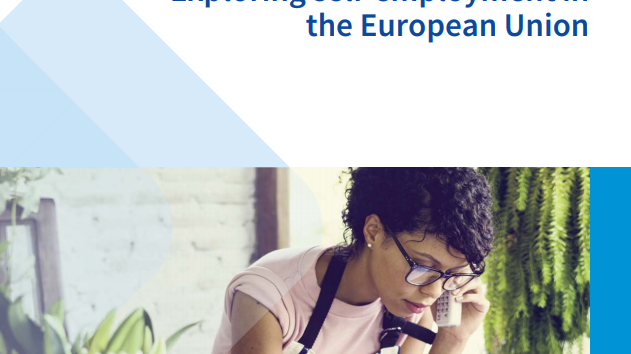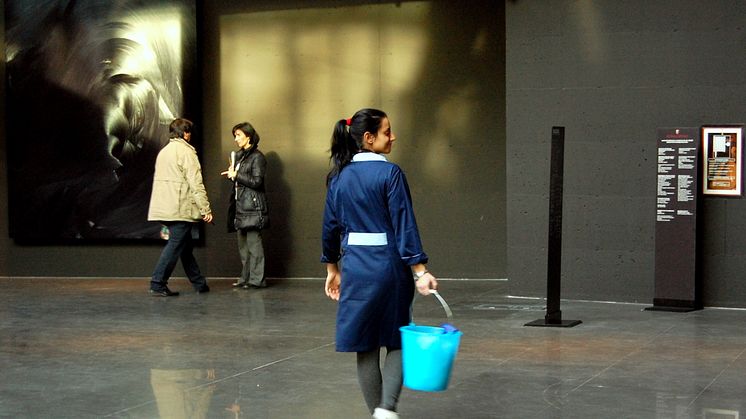
Blog post -
The many faces of self-employment in Europe
In this new blog piece Mathijn Wilkens looks at the multi-faceted nature of self-employment in Europe – from the entrepreneurial independent self-employed, to those that find themselves in a more vulnerable position.
While the Europe 2020 strategy actively promotes entrepreneurial self-employment as a means to create good jobs, policy makers at national and EU level are actively looking at better social protection for self-employed workers. Understanding this paradox requires looking beyond the ‘self-employed’ label and acknowledging it as an umbrella term covering a widely differing group of workers.
A new study by Eurofound shows that while some self-employed live up to the image of the entrepreneurial, independent workers who decide for themselves when and how to work, others are less fortunate and are stuck in precarious and dependent work situations.
Despite the growing debates, self-employment in the EU has in fact not increased in decades, remaining stable at around 15% of the EU labour force. This is largely the result of the shrinking agricultural sector – which traditionally has a high proportion of self-employed – counterbalancing the rise in services. Also, the trend for Europe as a whole masks significant country differences: in places like the Netherlands, the share of self-employment is rising more than in others. And the composition is changing: the share of self-employed with employees is declining, whereas the share of self-employed without employees is on the rise, especially those working part-time.
Eurofound’s European Working Conditions Survey (EWCS) shows that for one in five self-employed workers, self-employment was the only viable option as there were no other work alternatives. This is important because, as a recent study commissioned by the European Parliament shows, the likelihood of ending up in precarious employment is higher for those who did not choose to become self-employed. The biggest concern for these workers is lack of social protection, as acknowledged by the European Pillar of Social Rights which advocates the right to fair and equal treatment regarding working conditions, access to social protection and training, regardless of the type of employment relationship.
While there are increasing concerns about social protection and working conditions among self-employed workers, self-employment is also encouraged as a means of promoting entrepreneurship, innovation and job creation within the Europe 2020 strategy. This paradox results from different policy makers talking about different types of self-employed workers. To make sense of the political discourse at work here we need to know who exactly the self-employed are. Also, who needs social protection and who is sufficiently covered? We explored this diversity of the self-employed in the EU28 and investigated their coverage in social protection systems.
We use data from the EWCS to cluster the self-employed into groups with broadly common characteristics. The results show that in terms of their working conditions, the self-employed can be roughly divided into five distinct groups.
On one side of the spectrum we find the types of self-employed that the Europe 2020 strategy seeks to promote – entrepreneurial independent self-employed, often enjoying higher earnings and more autonomy which is reflected in healthier, happier and longer working lives. Two of the five clusters – labelled ‘employers’ and ‘stable own-account workers’ – represent about half of the self-employed. The ‘employers’ are a group of self-employed with employees, while the ‘stable own-account workers’ do not employ any employees. Both groups are more likely to be self-employed out of choice.
Left behind
The opposite is the case for one in four self-employed labelled ‘vulnerable’ and ‘concealed’ – representing together roughly the size of Austria’s population. These are the self-employed the European Pillar of Social Rights seeks to protect as they generally are in more precarious situations, with lower levels of income and job security, more dependent and with less working autonomy. They experience, overall, unfavourable working conditions and this seems to correspond to lower levels of health and wellbeing. Both the ‘vulnerable’ and ‘concealed’ in some respects resemble employees as they are more likely to depend on one client only (especially the ‘vulnerable’) and have less autonomy (especially the ‘concealed’).
The picture is more mixed for the cluster labelled ‘small traders and farmers’, combining both favourable and unfavourable working conditions. They tend to be economically independent and work autonomously, but find it hard to do their job. More than 70 percent work six or seven days a week and find it difficult to take time off. Like the ‘vulnerable’ and ‘concealed’ their health, well-being and job satisfaction is lower than for the ‘employers’ and ‘stable own-account workers’.
Despite elevated risks for the self-employed, social protection systems in the EU primarily cater for the standard employment contract. We show in the report that especially coverage for unemployment, sickness and accidents at work is lacking for the self-employed in most Member States. The Member States provide strongly differing levels of social protection in terms of access, coverage and the extent of coverage for the self-employed. All social protection systems are to some extent hybrids, but some countries (Sweden, Finland, Denmark) are more inclusive and provide largely the same protection for self-employed as for employees since it is largely based on universal schemes. Others have specific, parallel, systems for the self-employed while yet another group of countries mix these options by making certain schemes voluntary for self-employed.
Between the legal cracks
Approaches to dealing with the ‘in-between’ category of workers – formally self-employed but in practice employee – vary as well. Some have categorised economic dependence as abuse of the self-employment status and have introduced legal definitions to identify and combat bogus self-employment. In Italy, for example, the self-employment contract is deemed unlawful when the relationship with the client lasts a long time, remuneration covers most of the worker’s income and s/he actually works at the client’s premises.
Others have clarified the criteria for determining employment status in an attempt to reduce ambiguity: Belgium considers subordination and autonomy at work as criteria for distinguishing between the two. Spain uses similar criteria to classify workers in a completely different ‘third’ status called the ‘dependent autonomous workers’ or ‘trabajadores autónomos económicamente dependientes’, with a set of workers’ rights and obligations. Others use a hybrid approach, as in Austria where ‘free service contractors’ or ‘freie Dienstnehmer’ are considered employees for social security purposes and self-employed for tax purposes.
What can we take away from this? Our analysis of the EWCS shows the self-employed in Europe are a very heterogeneous group and no one-size-fits-all solution exists. For some, self-employment is an opportunity to grow a business and create jobs or have a better work-life balance. This should be facilitated. Others may be confronted with the worst of both worlds by risking economic dependency and precariousness while not being covered in social protection systems. These workers deserve a response from policy makers.
Download the report: Exploring self-employment in the European Union
Read more:
- European Commission: Taking stock of the Europe 2020 strategy for smart, sustainable and inclusive growth
- European Parliament: Precarious Employment in Europe
- European Commission: European Pillar of Social Rights - Building a more inclusive and fairer European Union
- European Commission: Employment and Social Developments in Europe 2015
- European Commission: Europe 2020 strategy






